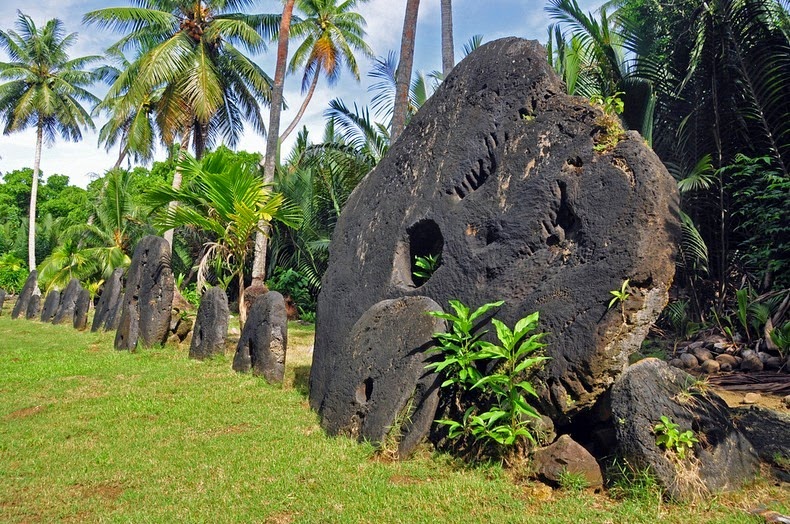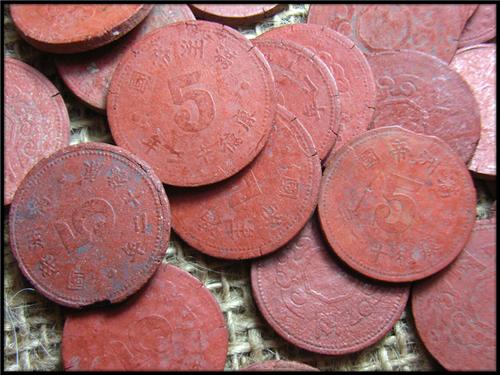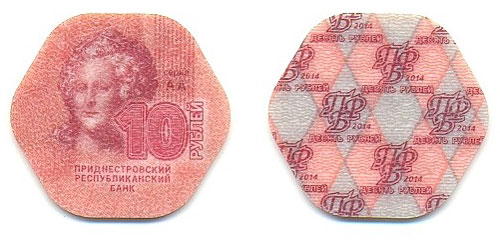Would it be possible to make coins from concrete with designs like the metal ones?
-
19$\begingroup$ "Sir, did you drop your wallet?" - "I really dropped it?! Oh well then, you can keep it." $\endgroup$– AlexanderCommented Aug 28, 2018 at 20:31
-
2$\begingroup$ This question is neither too broad (it's basically a yes or no!); and not off topic (who knows what crazy things some alien civilisation will make their coins out of!) Voting to keep open. $\endgroup$– elemtilasCommented Aug 28, 2018 at 23:56
-
18$\begingroup$ I can picture how this might go: "My Lords - the King hath decreed that from this day hence the coinage of the realm shall be made of concrete!" "What madness is this? Doth his highness not realize the ease with which the criminal classes will be able to coin their own money?!? Within a fortnight the economy will be shattered!" "Peace! Peace, my friend. For what the criminal classes may accomplish, may not those of us of better birth do yet better?" "Thou speakest truly, my lord! I'faith, I'm gonna go pour me a new castle!!!" $\endgroup$– Bob Jarvis - Слава УкраїніCommented Aug 29, 2018 at 0:07
-
5$\begingroup$ @BobJarvis, I was expecting a social commentary on governments being incapable of filling a hole in the road, despite the "money" poured into it $\endgroup$– Fifth_H0r5emanCommented Aug 30, 2018 at 12:44
-
$\begingroup$ Curiously, this appeared in the VTC queue with a vote for OT:NAW. How financial instruments manifest in an economy seems very much worldbuilding to me. $\endgroup$– JBHCommented Sep 4, 2018 at 4:30
8 Answers
Anything someone values can be made into and used as money. That ought to be Rule of Acquisition no. 1, but it ain't.
The point being: if you want to make currency out of concrete or cement, it is indeed technically possible. CaM's answer is thus half wrong, because of Renan's answer.
I'm assuming you want something something a little more portable than Yap Island Rai currency!
If concrete is what you're after, then I'd recommend your coins be made from polymer concrete. Several of its properties are superior to ordinary cement or concrete:
- Significantly greater tensile strength than unreinforced Portland concrete (since plastic is 'stickier' than cement and has reasonable tensile strength)
- Similar or greater compressive strength to Portland concrete
- Good chemical resistance
- Lighter weight (slightly less dense than traditional concrete, depending on the resin content of the mix)
- Product hard to manipulate with conventional tools such as drills and presses
The last point is important because you don't want the bad guys trying to turn you 4 daler coin into an 8 daler coin! Of course, the materials are all common, so, you'll have to put some readily detectable & traceable material within the aggregate to prevent counterfeiting.
Apart from the Yap coins:
coins have been made from clay:
and fibre:
and porcelain:
and ordinary cement:
as well as a whole host of other non-durable substrates:
Wood:
cardboard:
and glass:
and plastic / composite material:
And lastly, two oddities, each one spanning two different domains of money. First, the encased postage stamps (encased in thin brass & mica):
And lastly, issued in French North America to cure a shortage of coins, we present playing card money:
The only limiting factor for the coins your civilisation makes is your own imagination!
-
15$\begingroup$ I was going to say WTF over the cardboard ones, but that is exactly like paper money... BTW, awesome answer! $\endgroup$ Commented Aug 29, 2018 at 2:27
-
4$\begingroup$ In prisons, cigarettes are money. $\endgroup$– SentinelCommented Aug 29, 2018 at 7:06
-
2$\begingroup$ The chewing gum coin is made out of wood? $\endgroup$– CubicCommented Aug 29, 2018 at 12:57
-
1$\begingroup$ @Therac: Depends on the casino, or did back when I frequented them. As I recall, ones at the lower end used something like clay (understand that I never took them apart :-), ones at the higher used what looked like a metal - brass? - and plastic composite, quite heavy, with alternating segments of metal and plastic (color varying with denomination) around the circumference. $\endgroup$– jamesqfCommented Aug 29, 2018 at 16:30
-
4$\begingroup$ "Anything someone values" or the majority of people agree to value. Modern-day money doesn't have much inherent value, its value comes largely from agreement that it's valuable. $\endgroup$ Commented Aug 29, 2018 at 19:14
Possible, yes. But not useful.
You could make a cement coin. It could be pressed into a shape like a coin with embossed details, etc.
But it would be far too brittle to survive common coin usage. An unsupported piece of concrete roughly the thickness of a typical coin will shatter quite easily. So could fired clay or even carved stone at that thickness.
Also, concrete is abrasive. Coins rubbing together would generate dust and wear down the surfaces, obscuring detail and thinning the coin.
-
8$\begingroup$ A related issue is fineness of detail. A metal coin can be stamped with very, very thin and delicate details, which helps prevent counterfeiting. Cement or concrete wouldn't be able to do the same, the details would flake off. $\endgroup$– CadenceCommented Aug 28, 2018 at 20:05
-
1$\begingroup$ "obscuring detail and thinning the coin" +1, the coins wouldn't last weeks in normal usage. $\endgroup$– JBHCommented Aug 28, 2018 at 22:22
-
1$\begingroup$ Too much in the box thinking, my friends! Check my answer for counterexamples. $\endgroup$ Commented Aug 29, 2018 at 0:26
-
1$\begingroup$ Concrete and cement are not the same thing. Concrete is cement with “aggregate” mixed in. Depending on the aggregate, the concrete may not be brittle at all. $\endgroup$ Commented Aug 29, 2018 at 3:35
-
1$\begingroup$ @JBH : correction: the coins wouldn't last hours in normal usage. $\endgroup$– vszCommented Aug 29, 2018 at 4:42
Totally. Something similar has already been done:
Yap is known for its stone money, known as Rai, or Fei,: large doughnut-shaped, carved disks of (usually) calcite, up to 4 m (12 ft) in diameter (most are much smaller). The smallest can be as little as 3.5 centimetres (1.4 in) in diameter. Rai, or stone money (Yapese: raay), are more than 6,000 large, circular stone disks carved out of limestone formed from aragonite and calcite crystals. Rai stones were quarried on several of the Micronesian islands, mainly Palau, but briefly on Guam as well, and transported for use as money to the island of Yap. They have been used in trade by the Yapese as a form of currency.
The monetary system of Yap relies on an oral history of ownership. Because these stones are too large to move, buying an item with one simply involves agreeing that the ownership has changed. As long as the transaction is recorded in the oral history, it will now be owned by the person to whom it is passed and no physical movement of the stone is required.
There is even one such stone that is in the bottom of the ocea due to a shipwreck. Legend goes that the owners kept using that stone for trade anyway, trusting that oral tradition would keep honoring the transactions involving the lost stone.
These stones are often cited when someone wants to make a point that nearly anything can be used as currency provided that a set of requirements are met. Anyway, if stone will do, so will concrete.
-
3$\begingroup$ @CaM much easier to carry - since you don't. And in theory, the oral tradition could be replaced with something like blockchain accounting/transactions. $\endgroup$– ivanivanCommented Aug 29, 2018 at 4:20
-
1$\begingroup$ @ivanivan So basically you go around and tell all your neighbors you got a new coin? $\endgroup$ Commented Aug 29, 2018 at 6:13
-
10$\begingroup$ @ivanivan Sounds like that system is exactly the same as blockchain currency, only relying on human memory rather than cryptography. $\endgroup$– GuranCommented Aug 29, 2018 at 6:27
-
3$\begingroup$ @Guran You have to put in a lot of effort to make a coin, it's hard to socially engineer a significant number of people, and you need to control 51% of the population... Yup, that's block chain. $\endgroup$ Commented Aug 29, 2018 at 20:50
-
1$\begingroup$ How do I invest in Yap coin? $\endgroup$ Commented Aug 30, 2018 at 13:18
Elemtilas provides a great answer about currency generally. If you want concrete to function like the American dollar, you need a bit more limitation. For example, if the species of your planet naturally secretes phosphoric acid, then, yes, concrete coins could work because the real value would be the minter’s clear coating that keeps the coins from being dissolved when touched. Counterfeits would be identified by the fingerprints they develop. Authentic coins would not.
That’s just one solution. Basically, you need a basis of work to make the currency unique and a system for preventing counterfeiting. Anything you can do to either increase the effort required to create a coin OR limit the resources needed to complete that work can become a currency. You just need to figure out how to limit concrete shaping in your world.
What would rulers of rome have said to paper money?
Currency should have the following characteristics:
- Easy to identify.
Counter example: Uncommon postage stamps. Common ones are recognizable and can be used as currency. See Pratchett's "Going Postal" as well as some ads (Send 60 cents worth of postage for your...) A new stamp could easily be forged and passed off.
- Difficult to forge
Modern paper money with it's tracers, holograms, intricate detail is difficult to forge. In terms of coins, the Canada twoney is a good example with a gold coloured alloy insert.
Coins routinely cost more than their face value to make. This is a big discouragement to counterfeiting. Coins however last for decades, are commonly used thousands of transactions, so the cost is ammortized over many transactions to trifling amounts.
- Difficult to debase.
Coins acquired milled edges to make 'paring' detectable. Take a sliver of silver off of each coin, and get rich. Modern coinage rarely is backed by precious metal, although copper was high enough that pennies were an endangered species for a while. (The american cent had about 1.1 c worth of copper in it.)
- Useful denominations.
England had some odd coinage, with a pound being 20 shillings, but a guinea being 21. Before they rationalized it to a decimal systems you had endless opportunities for interesting arithmetic. A system that doesn't have reasonable size intervals can be cumbersome. Suppose the dollar had pennies, but no nickle, dime, or quarters? You could have fun with a system that had denominations that were all prime numbers. Come up with a system that to change any bill you needed at least 3 values of lower denominations. E.g. if your bill denominations were $2, $7, $11, $29, $73
- reasonably durable.
My brother used like the feel of crisp bills. He would run the money he made from his paper route through the washing machine, and would iron them, even using starch. (A different sort of money laundering...) Modern money takes a lot of abuse.
Currently small denominations wear out in a year or two. Banks pull them out of circulation, and replace them.
- more portable than the goods it buys.
Inflation was so bad at the end of the Weimar republic that people took a wheelbarrow of money to buy their daily bread. Yap money has some issues here.
Concrete money is possible, but you would need to use some of same concepts to make it difficult to forge that we use with modern money. Ground up colourants in the mix? Intricate detailing? Perhaps filling the markings with a layer of shellac, magnetizing the metal that re-enforces it? UV tracers in the glass fibers that re-inforce it.
I suspect that glass money is a better option. Glass is harder to work with, and it's transparency lends itself to more anti-forging techniques. It could also make very beautiful money.
Given a good tempering system it would be very durable, comparable to metal coinage, and more resistant to corrosion.
Sure, you could make money out of concrete. You could even etch designs on it, but as others have pointed out it would be brittle and generally fragile. Carving it out of some sort of natural stone would make it more long-lasting and durable.
If someone had a collection of concrete coins in a bag that they carried around, they would inevitably wind up with alot of broken coins due to the coarse texture and them all rubbing on each other, and if they really got busy they might reach in to pay for good and find that their money has crumbled to dust.
As others have pointed out though Anything that one places value on can be used as a currency. Historically many things have been used from native americans trading in beads, corn, and even trading in a bartering system. For that matter you could even use pencil shavings as a currency if society deemed it valuable.
So is it possible to make coins with designs out of concrete? Yes
Would they stand up to abuse? No, I'd recommend something natural, or something igneous like Basalt
Yes and to prevent counterfeiting, the mint can blend some rare spice into the concrete. It was usual to probe softness of gold coins with teeth, so licking them isn't so far fetched.
You might consider casino chips, some of which are made by a process that isn't all that far from concrete: https://en.wikipedia.org/wiki/Casino_token#Construction They are produced in many different colors, and with designs molded into them, and are pretty durable.











